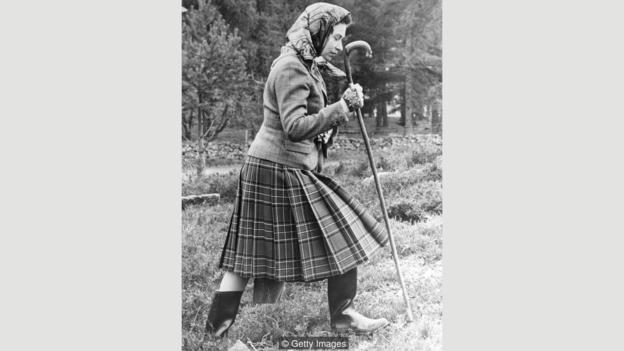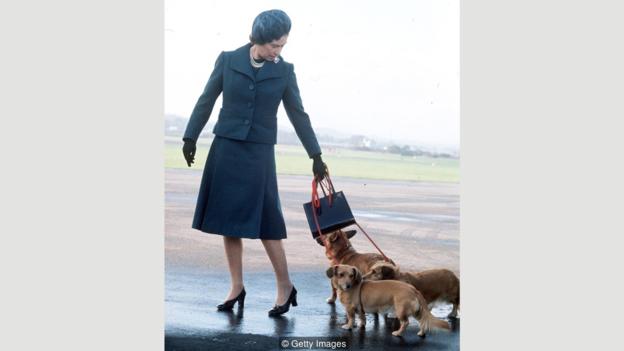What is in the Queen’s handbag?
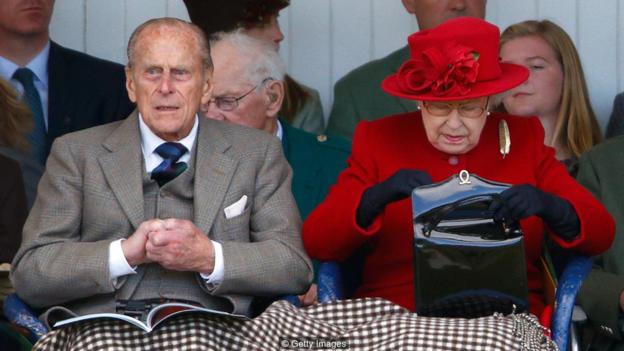

BRAEMAR, UNITED KINGDOM — SEPTEMBER 05: (EMBARGOED FOR PUBLICATION IN UK NEWSPAPERS UNTIL 48 HOURS AFTER CREATE DATE AND TIME) Prince Philip, Duke of Edinburgh and Queen Elizabeth II attend the Braemar Gathering at The Princess Royal and Duke of Fife Memorial Park on September 5, 2015 in Braemar, Scotland. There has been an annual gathering at Braemar, in the heart of the Cairngorms National Park, for over 900 years. The current gathering, in the form of a Highland Games and run by the Braemar Royal Highland Society (BRHS), takes place on the first Saturday in September and sees competitors in Running, Heavy Weights, Solo Piping, Light Field and Solo Dance watched by around 16000 spectators. This year the BRHS commemorate their bi-centenary. Members of the Royal family often attend the event and Her Majesty the Queen is Chieftain of the Braemar Gathering. (Photo by Max Mumby/Indigo/Getty Images)
As the British monarch celebrates her 90th birthday, Lindsay Baker delves into the immaculate wardrobe of the most photographed woman in history.
Her Majesty the Queen has never yielded to fashion’s whims. As royal designer Sir Norman Hartnell said rather sternly to The New York Times in 1953: “The Queen and the Queen Mother do not want to be fashion setters. That is left to other people with less important work to do.”
The Queen is, in other words, above fashion. Her signature style originated at the start of her reign, and she has steadfastly refused to deviate – so no regrettable ‘70s prints or ill-judged ‘80s frills and flounces. The Queen’s style is constant and intrinsic to her identity – and although it may look effortless, it subtly sends out all the required messages. It says: unwavering authority, tact and diplomacy, and when the occasion demands it, knock-out, opulent elegance.
In her book Luella’s Guide To English Style, Luella Bartley lists some tongue-in-cheek Upper Class Rules of dressing: “Nothing should look new; Impractical fashion victims will catch their death of cold; If you have to try you have lost; Tradition is all that matters; The country is where it’s at.” The Queen’s uniform represents these codes. It’s her look and she’s sticking with it – and it speaks volumes.
The Queen’s style says unwavering authority, tact and diplomacy
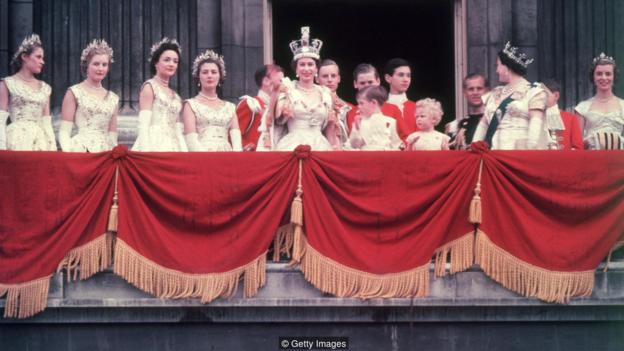
2nd June 1953: The newly crowned Queen Elizabeth II waves to the crowd from the balcony at Buckingham Palace. Her children Prince Charles and Princess Anne stand with her. (Photo by Hulton Archive/Getty Images)
The Queen’s sartorial choices frequently set the tone. For the Obamas’ recent visit to Windsor Castle for her 90th birthday, for instance, the Queen and the Duke of Edinburgh were filmed arriving to meet their guests in the grounds of the estate – with the Duke himself at the wheel of the Range Rover. The Queen sported a light blue skirt suit – with her trademark, no-nonsense headscarf, knotted pragmatically under the chin. The understated mood was set – informal, friendly, familiar.
The headscarf says unflashy, weather-proof, countryside, practical — and it has been a royal signature look since the 1940s when a young Princess Elizabeth was photographed with her sister Princess Margaret at a royal horse show, both sporting floral scarves. The look has also been adopted by the likes of Jackie Kennedy and Audrey Hepburn, and even taken on as a catwalk look in recent years by designers such as Dolce & Gabbana. In it the Queen is not just the Queen but the traditional, no-nonsense English countrywoman and grandmother, with dogs at her feet and a copy of the Racing Post tucked under her arm. That there is a touch of the ‘Brenda’ (Private Eye’s working-class nickname for the monarch) about the look only adds to its charm.
‘Always appropriate’
At Balmoral, the Queen goes even more off-duty in her look. From the 1950s it has remained unchanged – a tweed jacket or knitted twin-set, and a pleated Balmoral-tartan skirt. The tartan, with its granite grey, black and red hues, is personal to the royals and was created by Queen Victoria and Prince Albert after they acquired the Scottish estate. This unchanging attire of the Queen’s sends a subliminal message, not just about her character but about her class – after all, in certain circles, change, newness, trends and ostentation are somehow rather gauche, indicators of a kind of arriviste mentality.
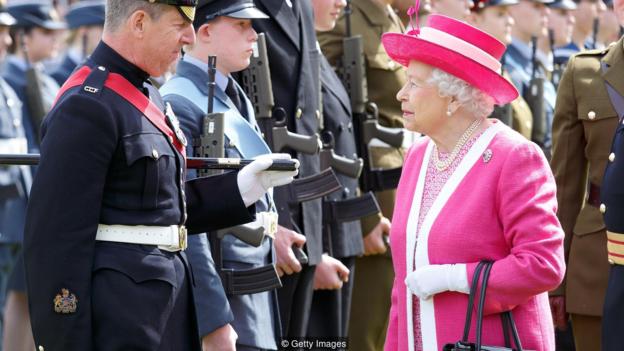
BERKHAMSTED, UNITED KINGDOM — MAY 06: (EMBARGOED FOR PUBLICATION IN UK NEWSPAPERS UNTIL 48 HOURS AFTER CREATE DATE AND TIME) Queen Elizabeth II inspects a Combined Cadet Force Guard of Honour as she visits Berkhamsted School on the occasion of the 475th Anniversary of its foundation on May 6, 2016 in Berkhamsted, England. (Photo by Max Mumby/Indigo/Getty Images)
The subtle code of 'U and Non-U' explored by Nancy Mitford in the 1950s points to the many complex indicators in English society that separate the upper and the non-upper classes. Although most of these codes now feel outdated and snobby, the notion that flashiness is not quite ‘the thing’ persists in aristocratic circles. The pitch-perfect, on-message countryside dress code is a big part of the monarch’s sartorial story.
“The Queen is always appropriate. What appeals is the Englishness of it, a kind of classic, timeless elegance,” says Caroline de Guitaut, curator of the UK exhibition Fashioning a Reign: 90 Years of Style from the Queen’s Wardrobe. “The exhibition is about memories,” de Guitaut tells BBC Culture. “The outfits shown span the majority of the 20th Century and into the 21st Century, with many of the big occasions that were part of the Queen’s life and our lives.”
The Queen has been a focal point for mass communication as it has evolved
As the most photographed and filmed woman in history and the longest reigning monarch, the Queen has been a focal point for mass communication as it has evolved, from its early days with the first colour photographs and newsreels, to the arrival of television and the internet. When she came to the throne in 1953, the Queen was just 25, her extraordinary coronation gown, created by Hartnell, was embellished with complex symbols and heraldic emblems of the British Isles and the Commonwealth, including an intricate pattern of Welsh leeks, meticulously embroidered on the dress.
It’s worth noting what a fantastically glamorous figure the young, 20-something Queen cut, and just what an impact her youthful, attractive image made on the national morale and psyche in the early days of her reign. For a country emerging from wartime austerity, the young Elizabeth was a figure of hope and modernity. The fact that she came to the throne during the heyday of British couture worked in her favour, and although she may have not set out to create trends, she was certainly much imitated. There was even a certain adventurousness about some of her tastes, according to de Guitaut: “Some of her hats from the 1950s and ‘60s have been really quite experimental and challenging.”
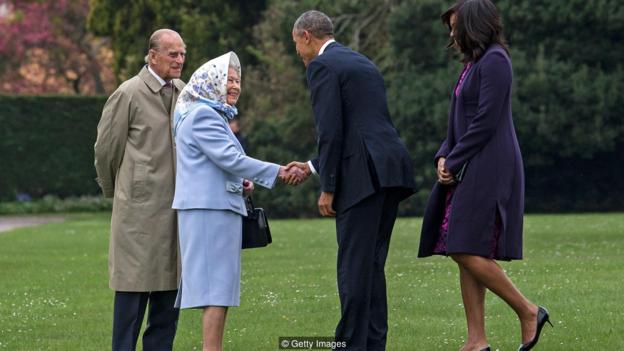
WINDSOR, ENGLAND — APRIL 22: US President Barack Obama and his wife First Lady Michelle Obama are greeted by Queen Elizabeth II and Prince Phillip, Duke of Edinburgh after landing by helicopter at Windsor Castle for a private lunch on April 22, 2016 in Windsor, England. The President and his wife are currently on a brief visit to the UK where they will have lunch with HM Queen Elizabeth II at Windsor Castle and dinner with Prince William and his wife Catherine, Duchess of Cambridge at Kensington Palace. Mr Obama will visit 10 Downing Street on Friday afternoon where he is to hold a joint press conference with British Prime Minister David Cameron and is expected to make his case for the UK to remain inside the European Union. (Photo by Jack Hill — WPA Pool/Getty Images)
In the 1950s the Queen was shown incessantly on newsreeld in her Hardy Amies creations (“Reserved, restrained elegance”, as de Guitaut puts it) and Hartnell designs (“More showy and flamboyant.”) It was Hartnell who created the Queen’s stunningly glamorous day dresses of that era, with nipped-in waists and full skirts. And in 1960, for her sister Princess Margaret’s wedding, she sported an immaculate aqua-blue silk taffeta gown with matching bolero jacket and gloves. The net hat was embellished with two blue roses to symbolise Margaret’s second name.
Power dressing
The subliminal language of the Queen’s diplomatic working wardrobe worn on state visits abroad has been similarly thought through, with each outfit incorporating a nod to diplomacy in the shape of an embroidered symbol, insignia or colour scheme, designed to pay a compliment to the host country. On one visit to Australia the Queen wore a dress embroidered with wattle, the national flower of the country; she wore a dress embellished with mayflowers in 1957 on a visit to Nova Scotia; in 1983 her dress was decorated with Californian poppies for a visit to the west coast of the US; closer to home, at the annual Balmoral Ghillies Ball in the late 1960s, the Queen wore an oyster ball dress with tartan sash. Then there is protocol to consider – the Queen has visited the Pope at the Vatican seven times, and has each time worn black, complete with a veil, as any female member of the royal family is required to do.
The royal wardrobe is now largely created by Angela Kelley in the Buckingham Palace workrooms, and the silhouette is a version of the column shift dresses the Queen first wore in the 1960s. The head-to-toe, colour-blocked daywear and matching hats that the monarch favours for her public engagements have become her personal brand. It is an instantly recognisable style.
“It’s a dialogue between designer and Queen, and in a way the Queen’s clothes set her apart from us,” says de Guitaut. “Because if she’s going somewhere we need to see her, otherwise it negates the point of her being there. People want her to stand out. So the format of her dressing has followed a constant path – the day dress and jacket or coat suit and a hat, and the obligatory accessories. You don’t see pattern much. You see a flash of solid, vivid colour with the hat matching the outfit, and the shape of the hat is recognisable.” In a perfect British Bake-off twist, some of the most iconic Royal hats recently inspired a range of cakes by Marks and Spencer to celebrate the 90th birthday of the monarch.
There are rules that are always adhered to – the two-inch heel, the hemline below the knee, the hem weighed down to avoid undignified wardrobe mishaps in windy conditions. The hats are small brimmed and tall (it is rare to see the Queen without any headgear – headscarf, hat or tiara is worn – unless she is indoors). The colours are bold, some might say difficult, pastels — lemon yellow or coral – and the silhouettes are tailored and suity. But it works – so much so, in fact, that the style has become a kind of paradigm for female power dressing, and has been adapted and borrowed over the decades by the likes of Margaret Thatcher, Angela Merkel , Nicola Sturgeon and Hillary Clinton. The look sends a message of power – it says poise, stature, not to be messed with.
Equally iconic is the Queen’s handbag, perhaps the most familiar item in her wardrobe. The bags are created by British brand Launer, and she is said to own 200 of them, all with elongated straps to allow for the necessary hand shaking. There has long been speculation about the bag’s contents. There is always a folded £5 note for the church collection on Sundays, some commentators have claimed, and a lipstick and mirror. And a mobile phone, suggest others — to call her grandchildren. The Queen has been said to use her bag to communicate subtly with her staff – if she places her bag on the table at a dinner, for instance, it discreetly semaphores the message that she would like the event to come to an end. In a recent formal family photo, one of the Queen’s small great-granddaughters clutches the large handbag proudly, as if to emphasise — and slightly lampoon — its near-mythic, talismanic status.
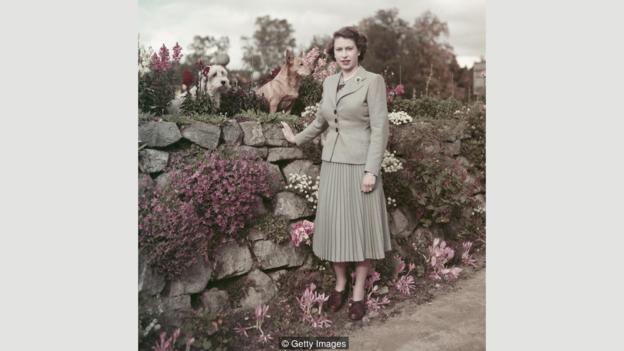
When the occasion demands it – for evening or a high state occasion — the Queen has always emerged triumphant in a fully regal ensemble. Her elegant beaded gowns, white fox-fur capes and glittering jewellery complete with tiara are a signature grand combination. The fact that this is a fashionable look this year, (Alexander McQueen, Saint Laurent, Gucci and Valentino have all incorporated a regal touch in their spring/summer collections this year) would seem to suggest that the royal nonagenarian’s ingenious sartorial messaging is still working its magic.
Политика конфиденциальности | Правила пользования сайтом
